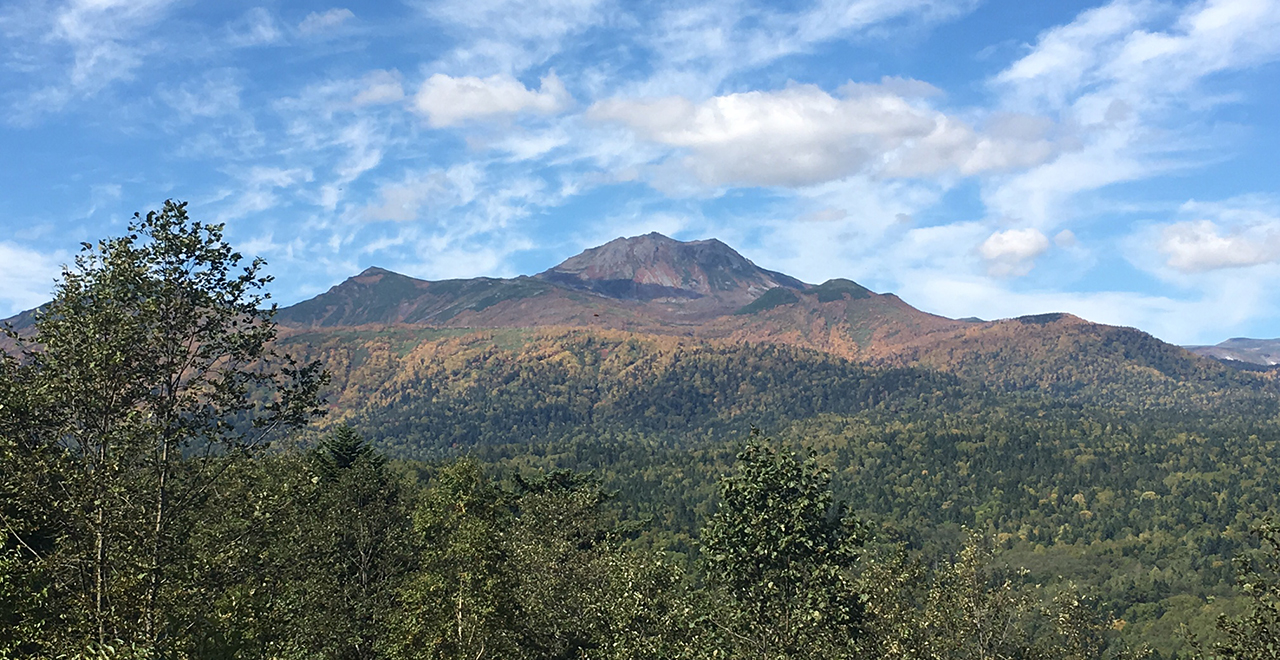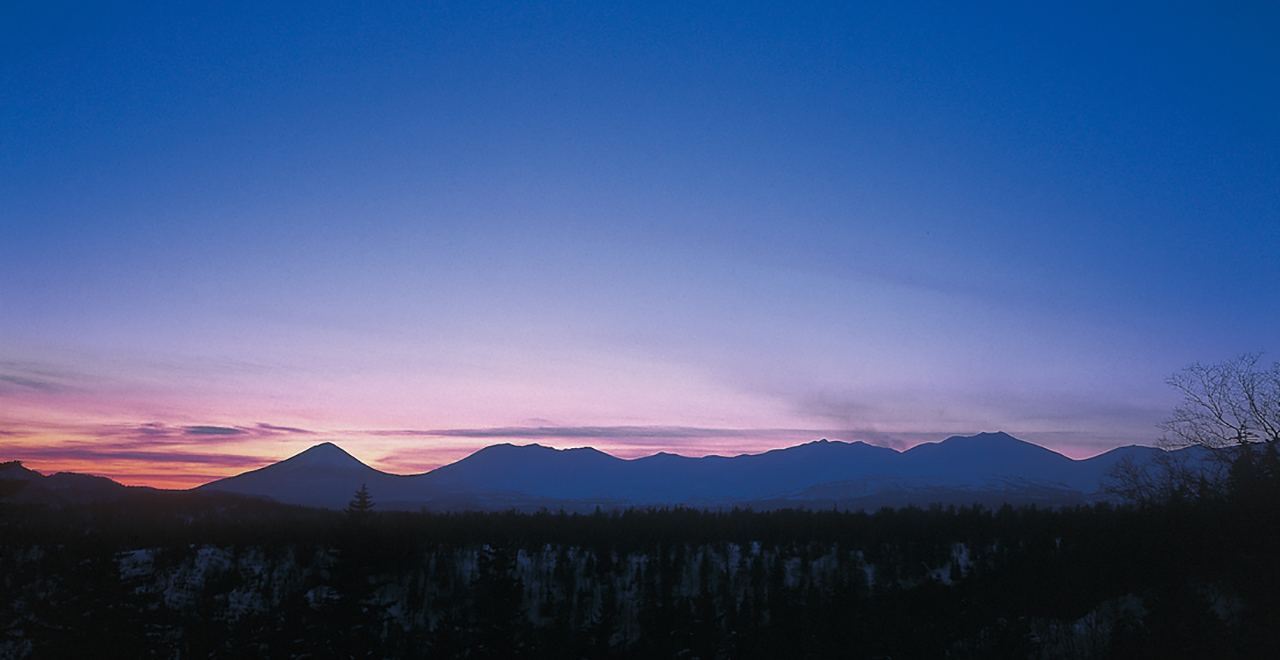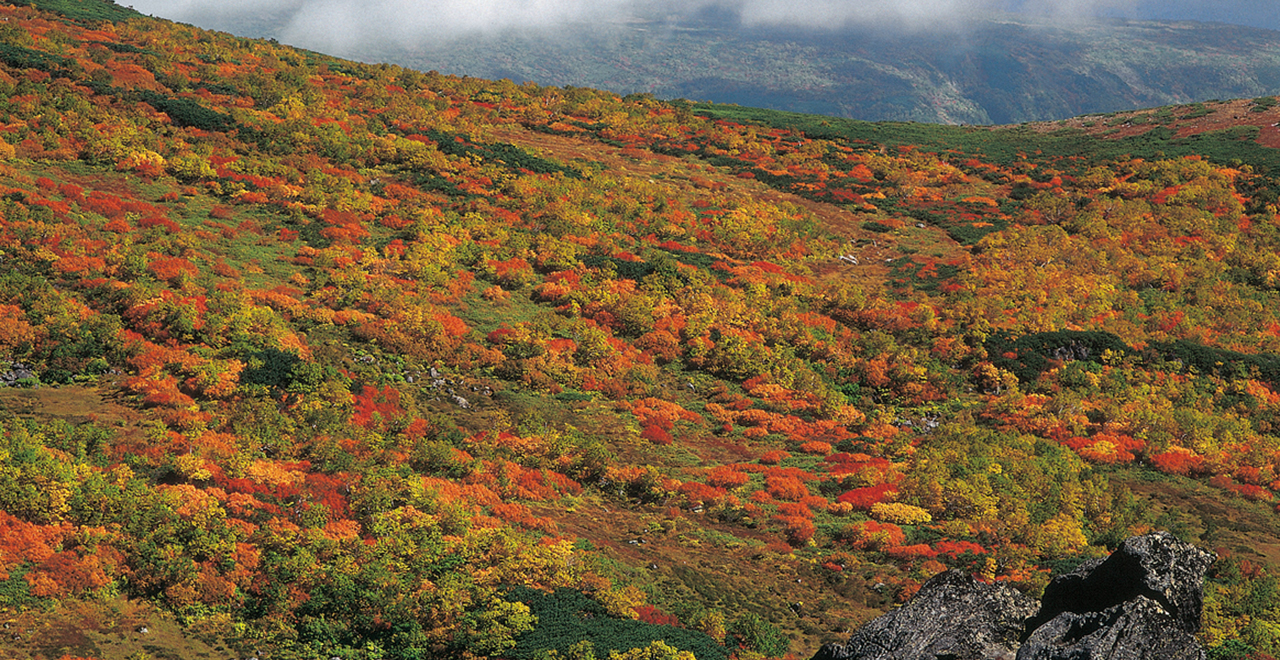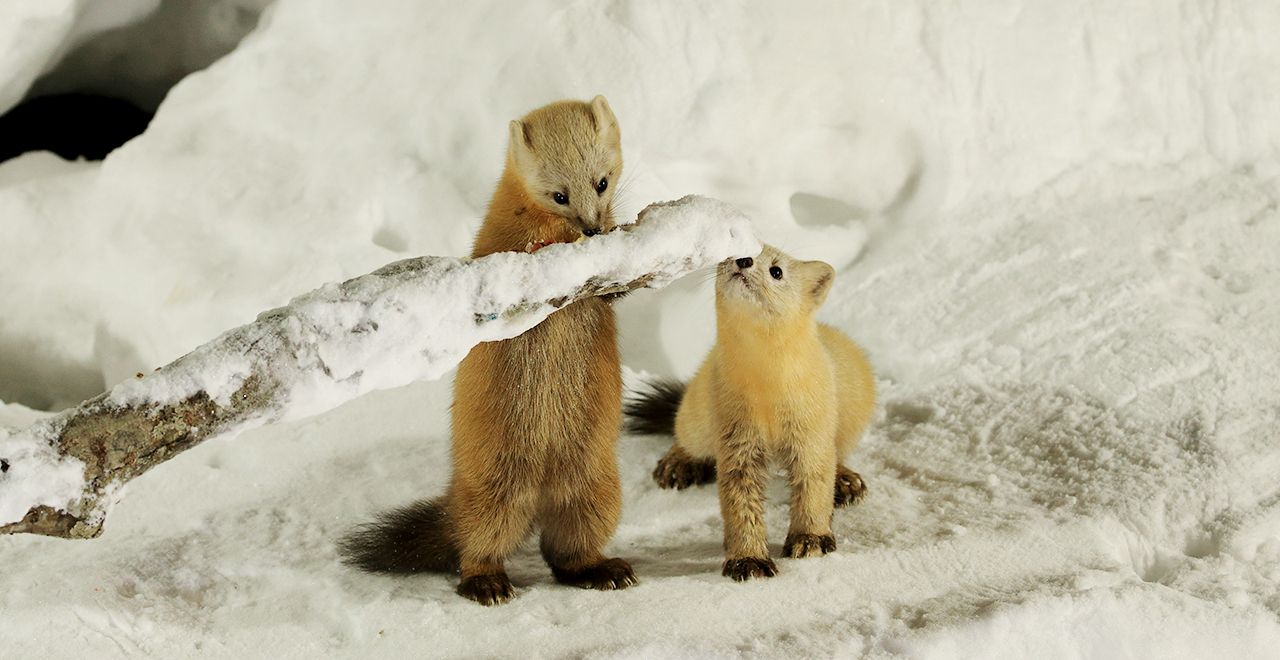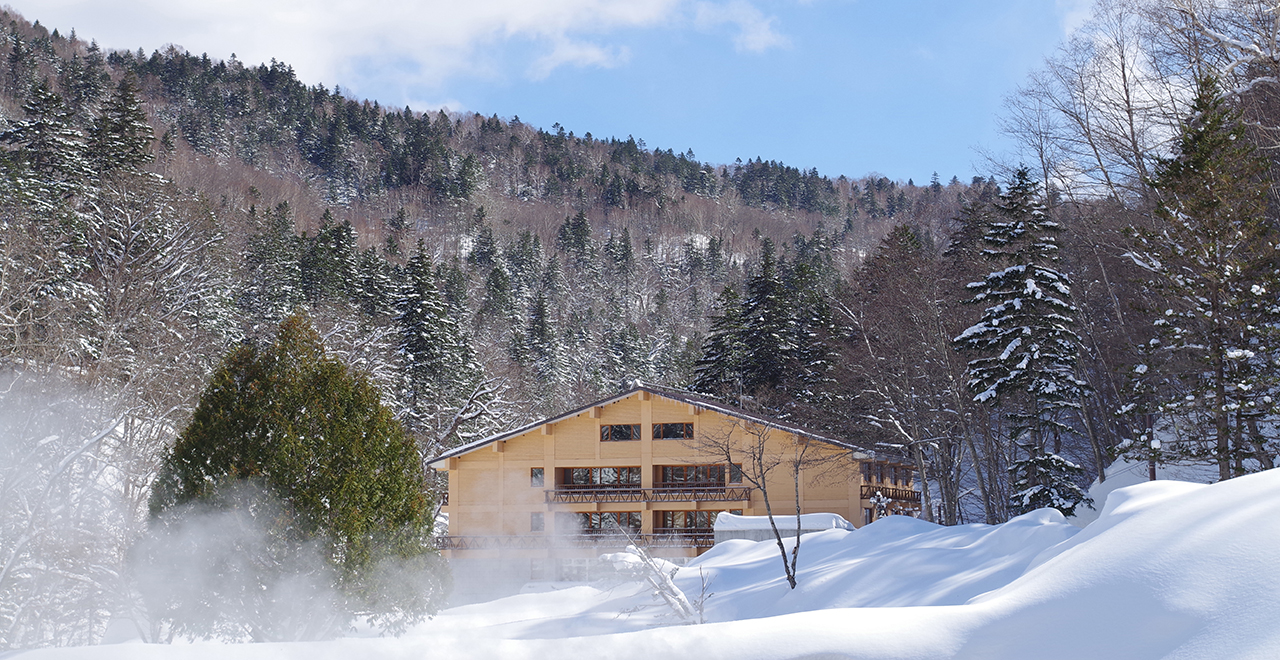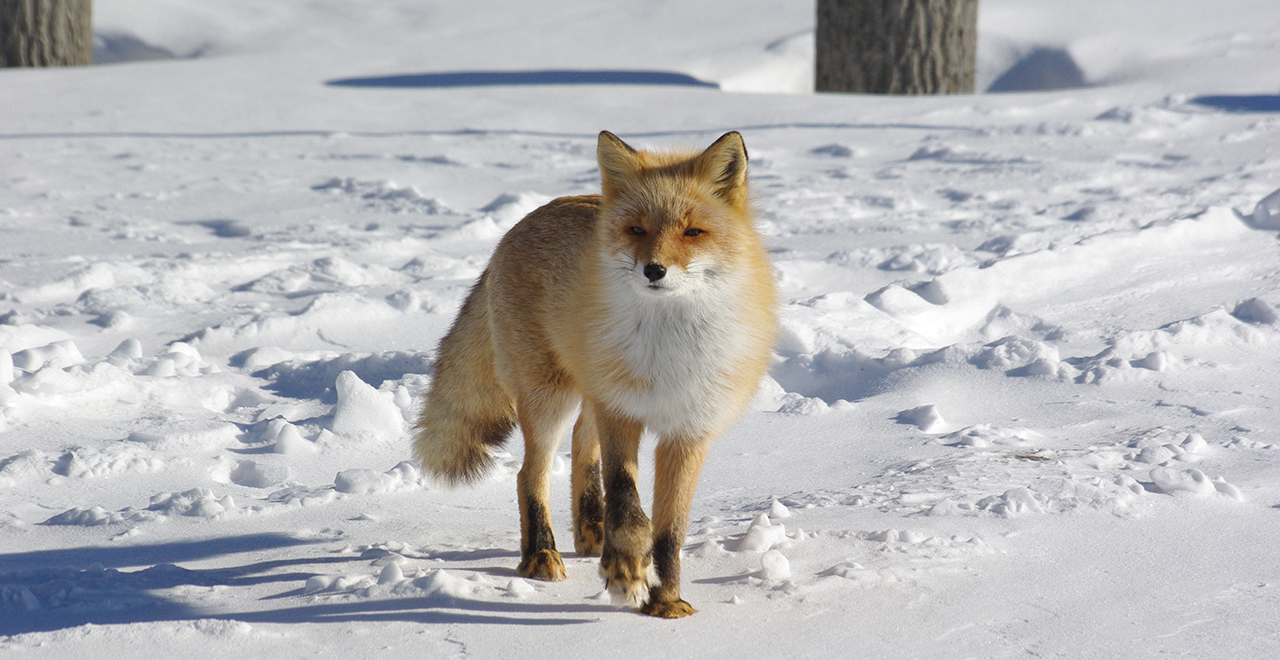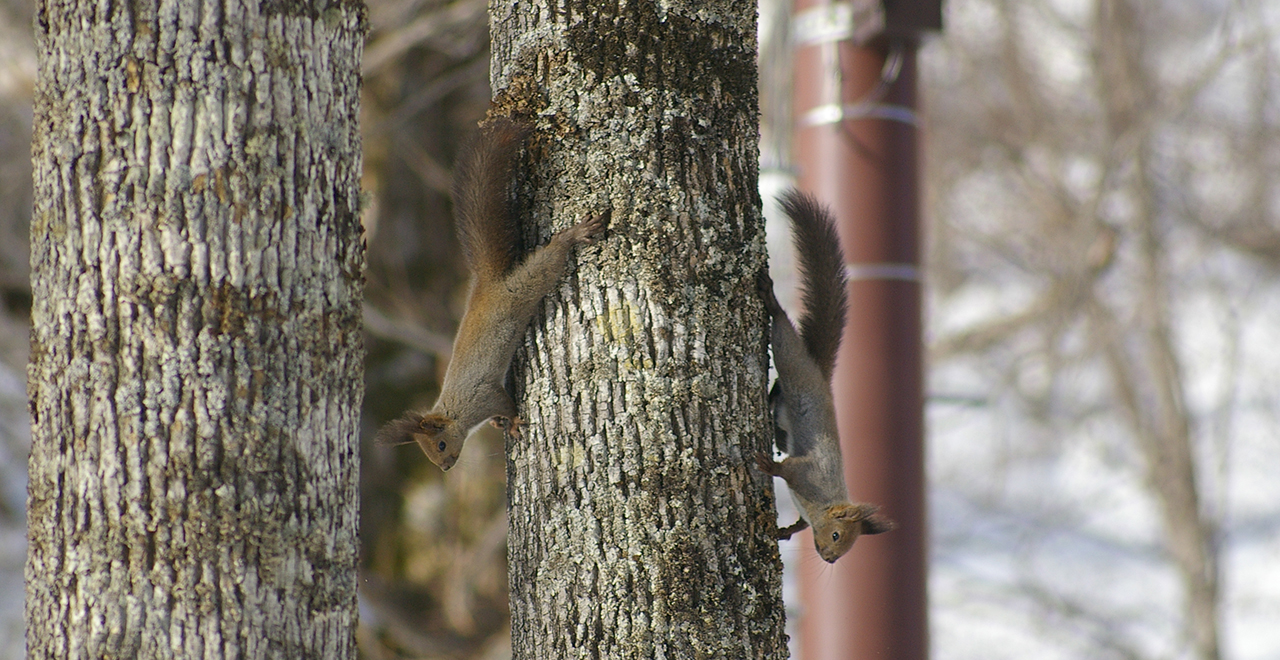Tomuraushi Recreation Forest
1,255.08ha
Elevation Lowest : 480m / Average : 650―750m / Highest : 964m (Mt. Tomuraushi: 2,141m)
A primeval forest spreading across the foot of Mt. Tomuraushi, which is highly prized by mountaineers
A primeval forest spreading across the foot of Mt. Tomuraushi, which is highly prized by mountaineers
- Newest information
- Area
- Activities
- Overview
- Latest Information
- Usage Guide
- Facility
- Map
- Location
- Access
(Distances and times are
provided as a guide only) - Management office
contact details - Information on Other Local
Tourist Attractions - Official Tourist Information
- Recreation Forest
Management Committee - Supporters
- Other
- Newest information
- CHECK
Please visit official tourism websites for the latest updates and information.
- Area
- Hokkaido
- Activities
- Flower-viewing (species: Ezo Yamazakura, sargent cherry (Prunus sergentii)) : Mt. Shintoku Shrine (Outside the forest) Autumn leaf viewing (Includes surrounding area) Waterfall viewing : Kasumi Falls, Hio Falls (Outside the forest) Birdwatching (Includes surrounding area) Picnics (lawn area/park) (Includes surrounding area) Mountain climbing (Includes surrounding area) Paddling / fishing (lake / river) (Includes surrounding area) Canyoning (River trekking) (Outside the forest) (Payment required) Guided tours (Outside the forest) (Payment required) Hot Spring (Includes surrounding area) Sahoro Resort Ski Area (no. of trails: 21) (Outside the forest) (Multilingual signs or pamphlets available) Shrine / Temple visit : Shintoku Shrine (Outside the forest)
- Overview
-
- Geographical/topographical features
- The Tomuraushi Recreation Forest is located almost at the center of Hokkaido. The Daisetsu Mountains (the Daisetsu volcanic group) soar up to the north and extend to meet the Tokachidake Mountains (the Tokachi volcanic group). It is an area of unspoiled nature, mainly consisting of mountains that include active volcanos. Because the mountains cover such a wide area, this area is thought to have remained unexplored for a long time.
The area containing the headwaters of the Tokachi River on the eastern foot of Mt. Tomuraushi in the southern part of the Daisetsuzan National Park is a natural wilderness conservation area―one of only five such areas designated in Japan. It is an extremely precious area where forests of Ezomatsu (Yezo spruce (Picea jezoensis)) and Todomatsu (Todo fir (Abies sachalinensis)) can still be seen in their virgin state. - Historical/cultural features
- Many place names in Hokkaido are derived from the language of the Ainu people. While there are different speculations on the origin of the name “Tomuraushi,” it is said to have derived from “tonra-us-i” (a place where hot-spring mineral deposits flow), while Shintoku is thought to originate from “sittoku-nai” (a shoulder or edge of a mountain) or from “sintoko,” a type of lacquerware used to brew sake, and that Shintoku was a place for making sintoko.
In 1899, when the development of Hokkaido was at its peak, Wajuro Murayama and others from Takasaki Village, Yamagata Prefecture, began converting wildlands in the Shintoku area.
Mt. Tomuraushi, which forms part of the Daisetsu Mountain System, was designated as a national park in 1934. It was designated as a natural monument in 1971, and further as a special natural monument in 1977 for being a natural treasure-house of significant value globally. - Climate, flora and fauna
- The area has a cold climate and begins showing signs of late autumn weather earlier than anywhere else in Japan. In high elevation areas, the leaves start to change color in early September and gradually turn the vast forest red and yellow, spreading toward the base of the mountain. A large number of tourists visit Mt. Tomuraushi every year to see the colorful autumn foliage. Mt. Tomuraushi is also home to rare species of wild animals such as Nakiusagi (Japanese pika (Ochotona hyperborea yesoensis)), which is said to have survived the ice age, Kumagera (black woodpecker (Dryocopus martius)), and Shimafukuro (Blakiston's fish owl (Ketupa blakistoni blakistoni)), alpine plants such as Iwahige (cassiope (Cassiope lycopodioides (Pall.) D.Don)) and Ezokozakura (wedgeleaf primrose (Primula cuneifolia Ledeb. var. cuneifolia)), and indigenous species that can only be found in Daisetsu Mountains in Japan, such as Usubakicho (Parnassius eversmanni daisetsuzanus) and Asahihyomon (Clossiana freija asahidakeana).
- Attractions
- ・Trekking: Mt. Tomuraushi has been selected as one of the 100 Famous Japanese Mountains, and it is held in extremely high regard by mountaineers. The views from the summit are overwhelming, overlooking an intact forest that dynamically changes in appearance throughout the seasons. Mt. Tomuraushi is referred to as the “last unexplored region in Japan” for its varying beauty and abundance of wild flora and fauna, and it attracts many trekkers in the summer.
・Hot spring: Tomuraushi Onsen, nestled in the Daisetsu Mountains, has a hydrogen carbonate spring that is renowned for making bathers’ skin beautiful. In addition to relaxing in the spacious indoor baths, you can enjoy the seasonal scenery to your heart’s content in outdoor baths while listening to the sound of the river.
・Soba noodles: This area is one of the most prominent soba (buckwheat) production areas in Japan. The huge temperature gap between night and day specific to the foot of the mountain brings out the soba’s flavor―the most important factor in the quality of the soba. Soba from this area has won Japan’s top prizes four times, including the Minister of Agriculture, Forestry and Fisheries Prize at the National Soba Production Award.
・Activities: The Tokachi River has abundant water throughout the year, making it excelling for rafting. In the winter, visitors can ski in the fine powder snow while overlooking the Tokachi Plain. A soba noodle workshop also provides an entertaining experience for both adults and children. You use soba flour milled with a grindstone the same day and taste soba noodles in the best way possible―freshly milled, made and boiled.
- Latest Information
-
- Regular events
- ・Shintoku Soba Festival (last Sunday of September every year)
・Umaissho Shintoku Taisetsu Festival (early October every year) - Warnings (Flora and fauna)
- ・Ezo Brown bears: Higuma (brown bears (Ursus arctos)) may be present during the period from May to November. When entering the forest, please carry a bear bell and stay in a group. Check for local information on bear sightings and warnings and follow instructions.
・Ticks: Please note that ticks are present in bamboo grass areas. Wearing long sleeves and long trousers is essential. - Warnings (Dangerous areas)
- Trekking to the summit of Mt. Tomuraushi from the trailhead is a long and very physically demanding experience. Many guidebooks show a course time, but this is only a guide, and the time can change considerably depending on the weather, physical fitness level and technique. Make sure to include an ample time allowance in your trekking plan.
- Usage Guide
-
- Entrance fee
- Free of charge
- Opening seasons and hours
- Accessible 24 hours a day, 365 days a year
- Staffed facilities such as administration buildings
- Tomuraushi Onsen Higashi-Taisetsuso operates 365 days a year.
- Accommodation options
- [Inside the forest] Tomuraushi Onsen Higashi-Taisetsuso, Tomuraushi Campsite (early July through late September)
[Outside the forest] Osoushi Onsen Shikanoyuso, Yama No Koryukan Tomura, Yuyado Kuttari Onsen Lake Inn
- Facility
- Toilets and drinking fountains (Includes surrounding area) Toilet (accessible) (Includes surrounding area) Tomura Walking Trail (Outside the forest) Parking lot Observation platform : Hakuundai, Bogakudai Vending machine (Includes surrounding area) Shop (Includes surrounding area) Restaurant (Includes surrounding area) Campsite and/or cabins (Includes surrounding area) (Payment required) Cultural asset (nationally designated) (Includes surrounding area) : Daisetsu Mountains (special natural monument) Accommodation facilities (Hotels/Japanese inns) (Includes surrounding area)
- Map
- Location
- Tomuraushi, Kuttari, Shintoku Town, Kamikawa County, Hokkaido
- Access
(Distances and times are provided as a guide only) -
- By public transport
-
<Access from nearest railway station / bus stop>
- ・Tomuraushi Onsen Higashi-Taisetsuso free shuttle bus (only for guests staying at Higashi-Taisetsuso; advance reservation required)
- ・Obihiro Tokachi Plaza → Shintoku Station → get off at the Tomuraushi Onsen Higashi-Taisetsuso bus stop (about 145 minutes)
<Access from major transport hubs to nearest railway station / bus stop>- ・Tokachi-Obihiro Airport (Connecting bus to Obihiro city: about 40 minutes) → Obihiro Station (Ltd. Exp. Super Ozora or Ltd. Exp. Super Tokachi: about 35 minutes) → Shintoku Station (*)
- ・Sapporo Station → (Ltd. Exp. Super Ozora or Ltd. Exp. Super Tokachi: about 130 minutes) → Shintoku Station (*)
- * Shintoku Station (Takushoku Bus (operating only from mid-July through mid-August): about 90 minutes) → get off at the Tomuraushi Onsen Higashi-Taisetsuso bus stop
- ・Asahikawa Station ([Intercity Express Bus] North Liner → via Furano Station: about 180 minutes) → Shintoku Town Hall (Takushoku Bus: about 90 minutes) → get off at the Tomuraushi Onsen Higashi-Taisetsuso bus stop
- * Only accessible by car or the Tomuraushi Onsen Higashi-Taisetsuso free shuttle bus at times other than mid-July through mid-August
- By car
-
<Access>
- ・Sapporo Station (Hokkaido Expressway (Sapporo-Minami IC) → Doto Expressway (Doto Expressway): about 120 minutes) → public road (about 90 minutes) → Tomuraushi Recreation Forest
- ・Asahikawa Station → public road (about 195 minutes) → Tomuraushi Recreation Forest
- ・Obihiro Station → public road (about 110 minutes) → Tomuraushi Recreation Forest
- ・Shintoku Station → public road (about 70 minutes) → Tomuraushi Recreation Forest
<Car parking capacity / parking charges>Free parking for approximately 20 vehicles
- Nearby tourist facilities
-
- Tokachi Sahoro Resort: About 60 minutes by car. A wide variety of activities are available at the resort throughout the year, including nature experiences, horse riding, crafts, sports and sightseeing excursions. The “Bear Mountain” created in Sahoro-No-Mori Forest is a safari park where visitors can closely observe about a dozen Higuma (Ezo brown bears (Ursus arctos)) that roam freely in the park, from a bus or footpath. These nearly wild bears are extremely powerful and impressive.
- [Nearby accommodations]
- Sahoro Resort Hotel: A resort in the Karikachi Heights with a rich natural environment
- Club Med Sahoro Hokkaido: A premium resort with an international atmosphere and a multinational staff and guests. Its all-inclusive services are also attractive.
- Management office contact details
-
Higashi Taisetsu Branch Office, Tokachi Seibu District Forest Office
- Information on Other Local Tourist Attractions
-
Tomuraushi Onsen Higashi-Taisetsuso [External link]Tokachi Dam Management Branch, Obihiro River Office [External link]Tokachi Adventure Club [External link]Tokachi Outdoor Mates [External link]
- Official Tourist Information
-
Hokkaido Takushoku Bus [External link]Industry Division, Shintoku Municipal Office [External link]Shintoku Town Tourism Association [External link]
- Recreation Forest Management Committee
-
Tomuraushi Recreation Forest Management Committee
Industry Division, Shintoku Municipal OfficeTEL:0156-64-0522
FAX:0156-64-6464
- Supporters
- ー
- Other
- ー





